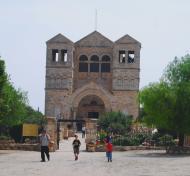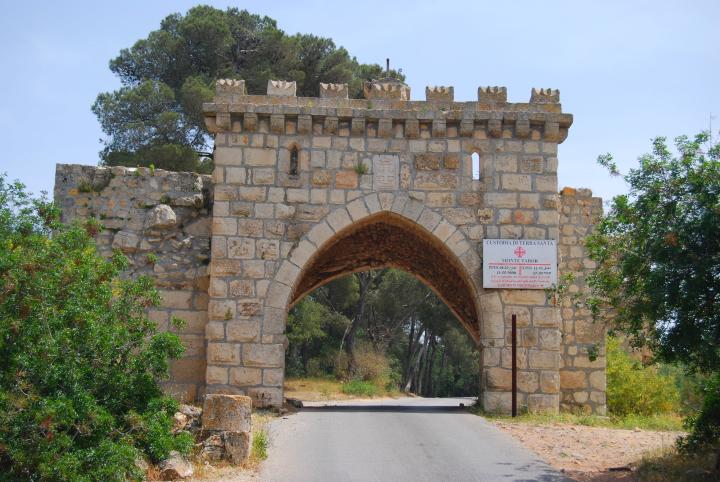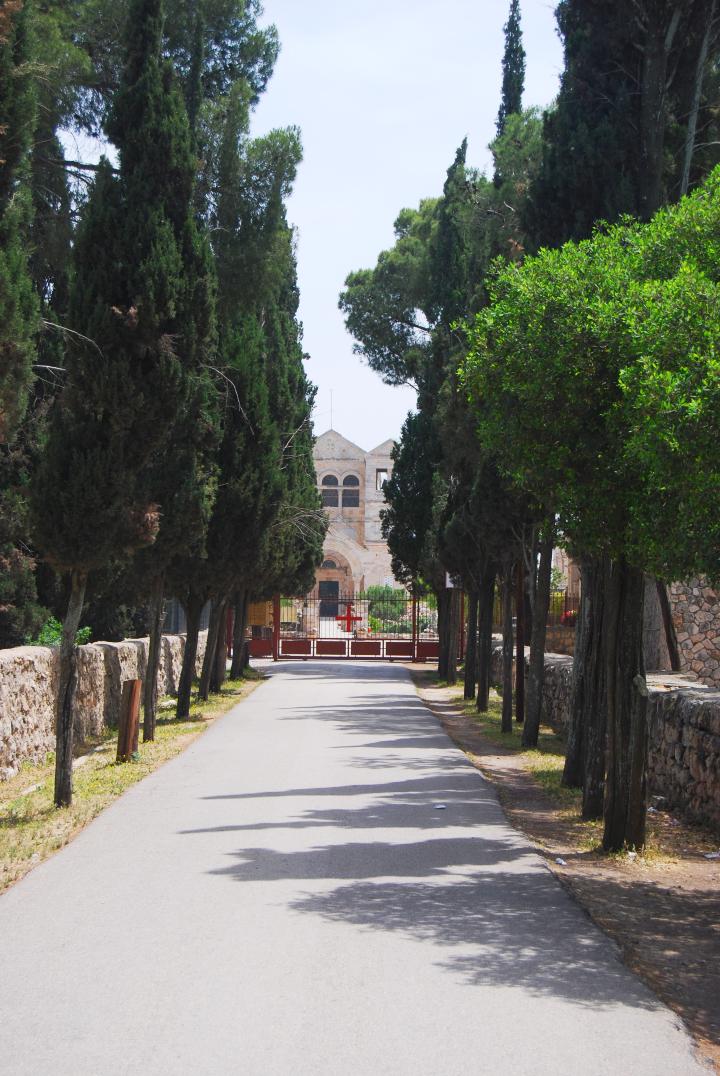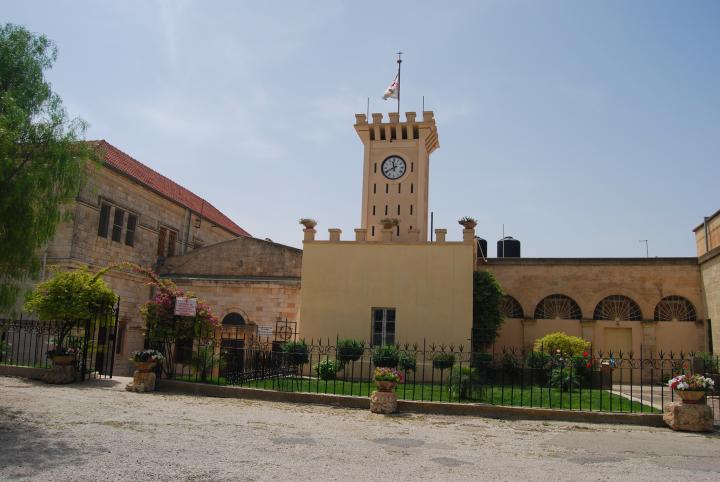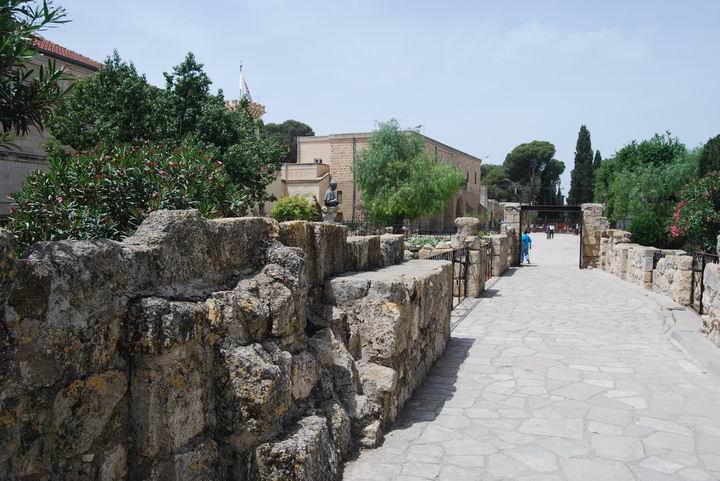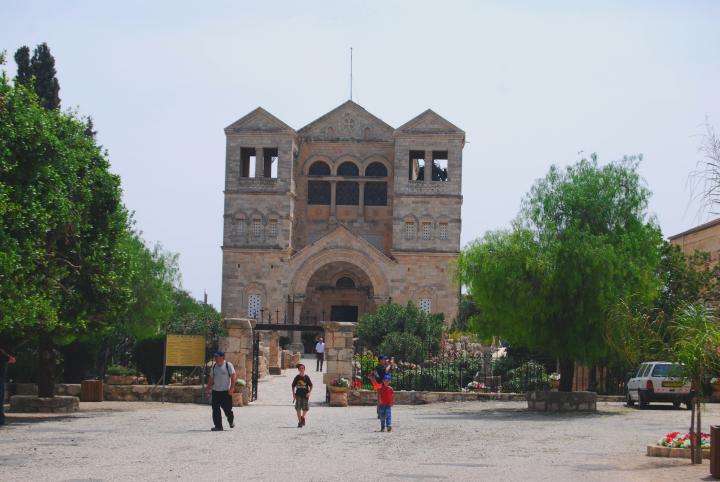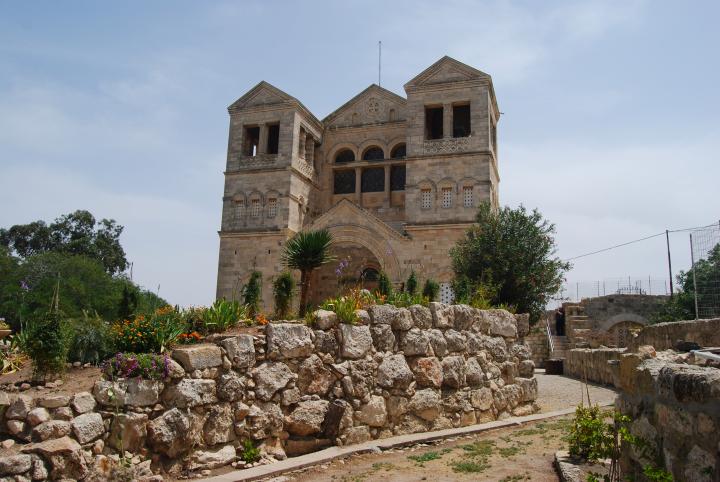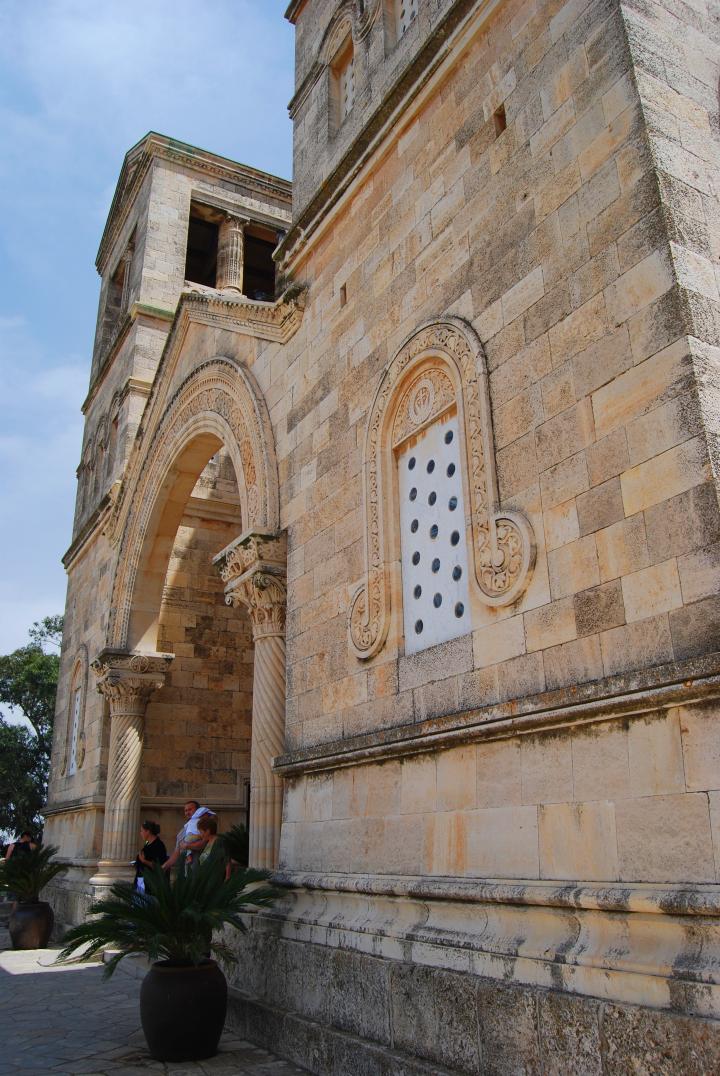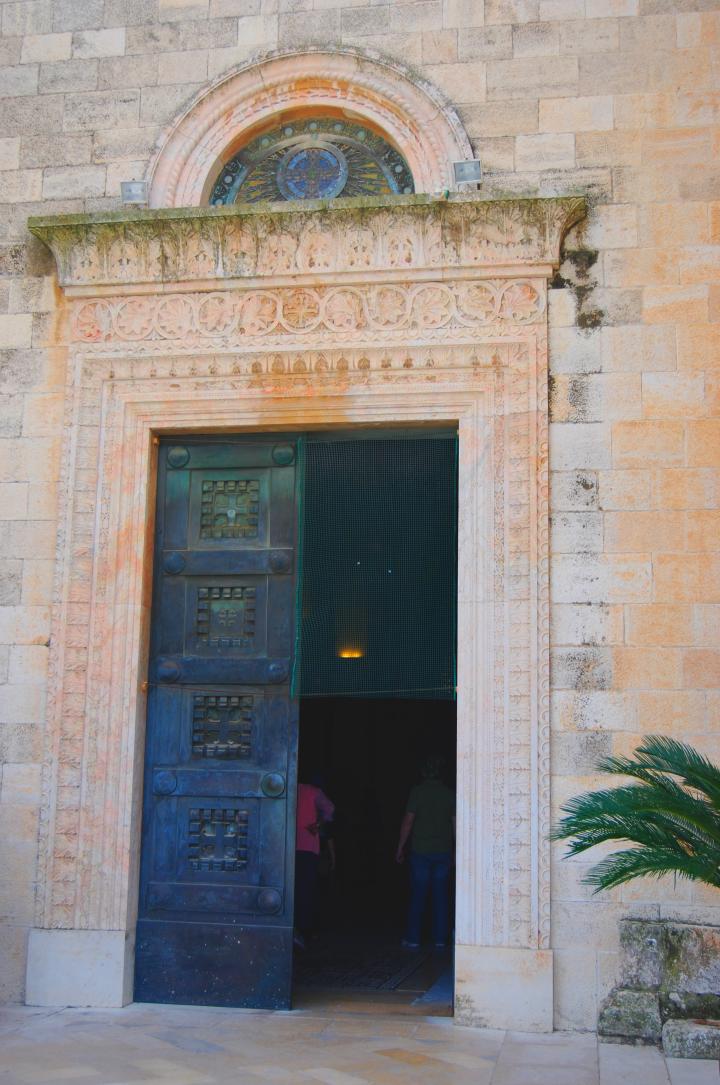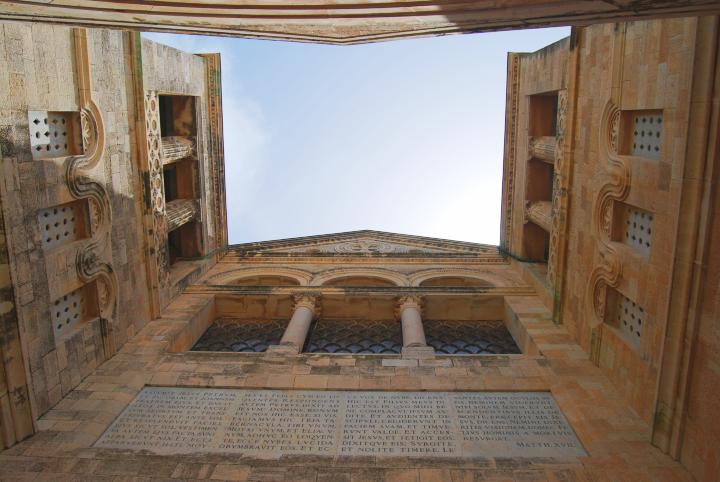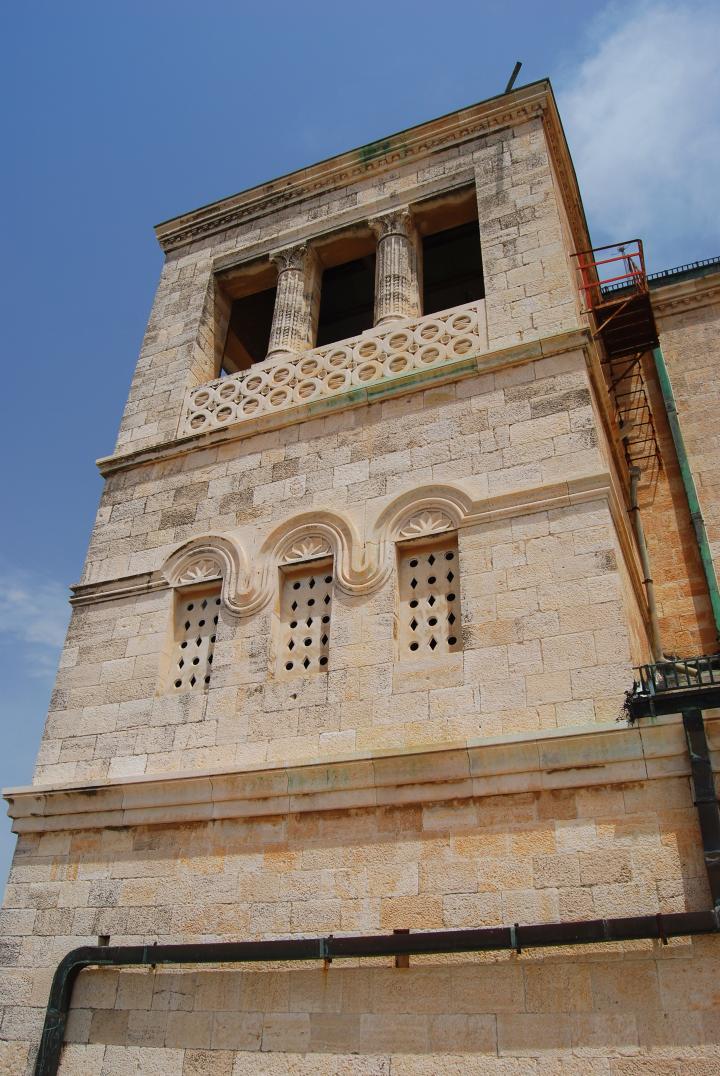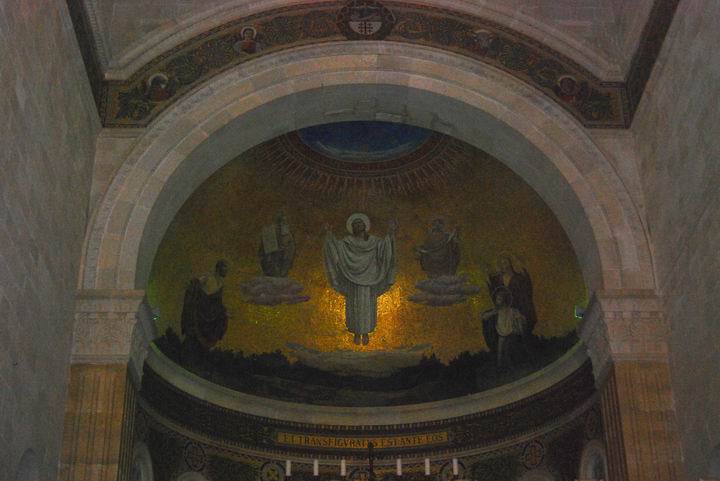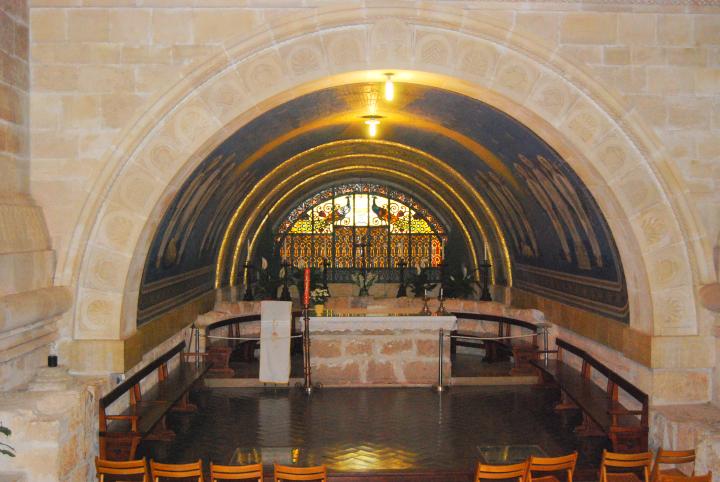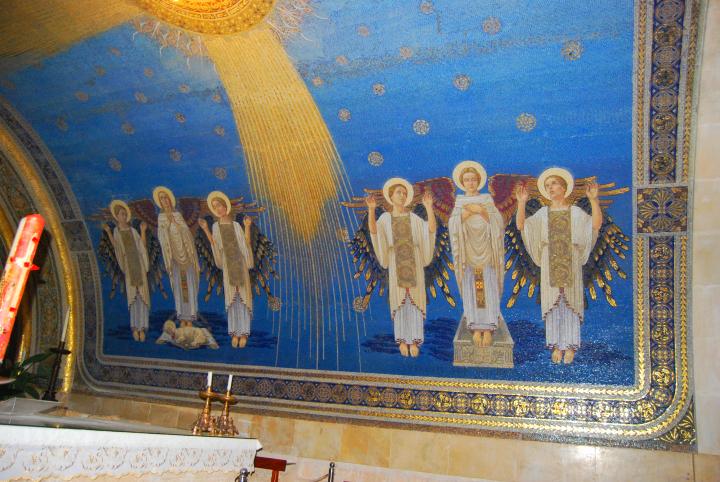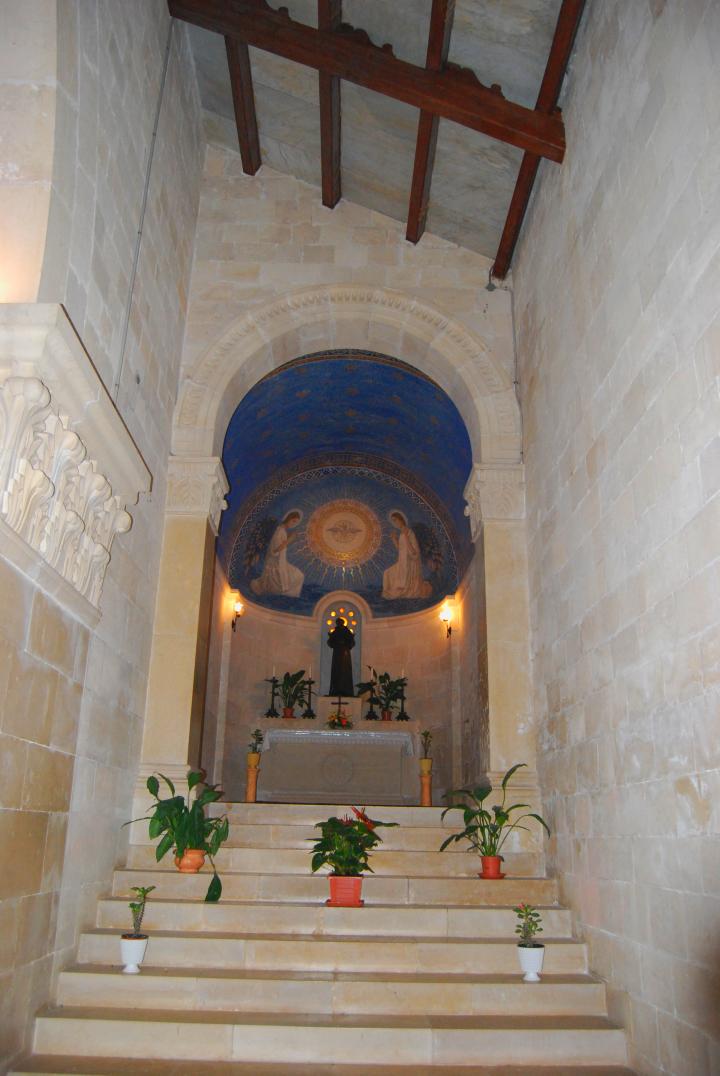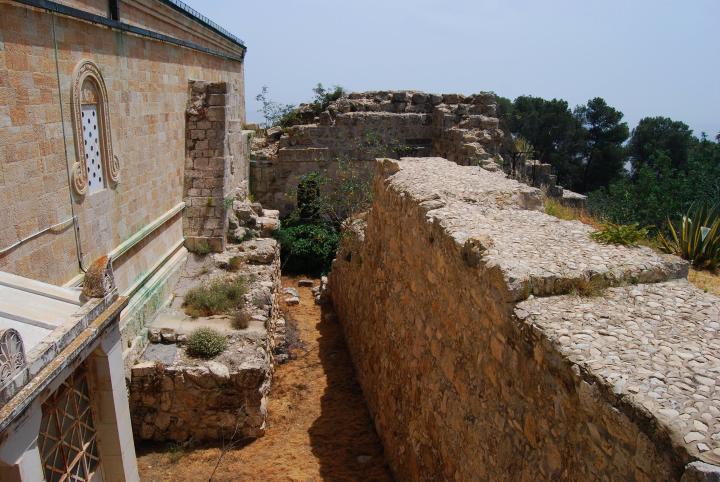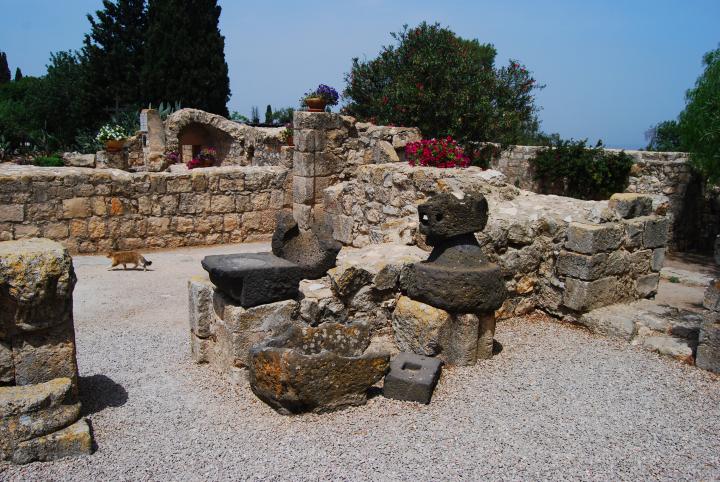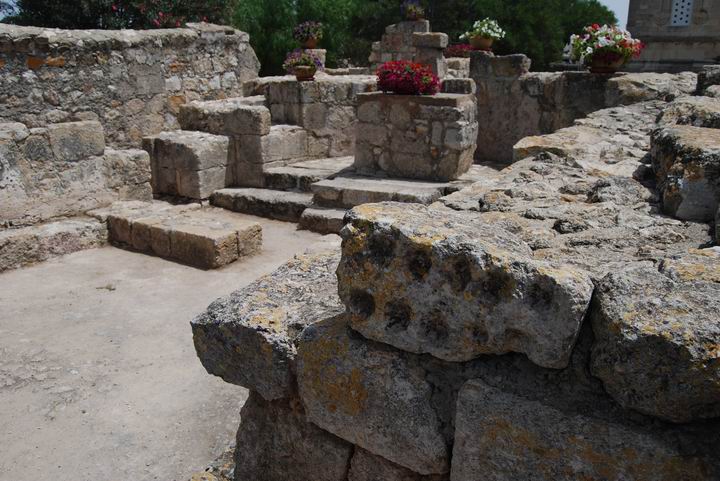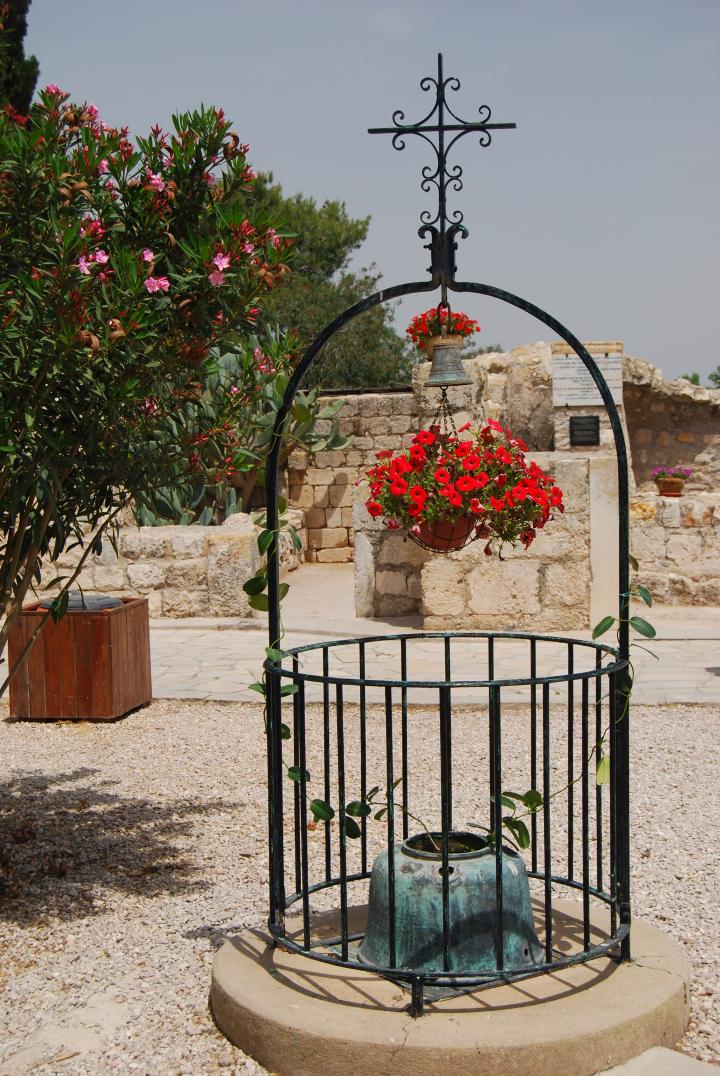The tradition links mount Tabor to the Transfiguration of Jesus. On top of the hill is a Franciscan Monastery with a magnificent basilica. Matthew 17:1: “…and bringeth them up into an high mountain apart, And was transfigured before them.”
Home > Sites > Yizreel Valley> Mount Tabor > Franciscan Monastery
Contents:
Background
Aerial Map
History
Photos
* Ext. Entrance
* Yard
* Exterior
* Entrance
* Interior
* Garden
* Aerial Views
Biblical
Links
Background:
On the south-east side of the top of Mount tabor is a Franciscan monastery. This 20th century complex was built over the ruins of ancient churches (Byzantine and Crusader). The Transfiguration church stands on its east side and is one of the most magnificent churches in the Holy Land.
For more information on Mount Tabor and its sites, see the overview page.
Aerial Map:
The following aerial view shows the points of interest around the monastery.
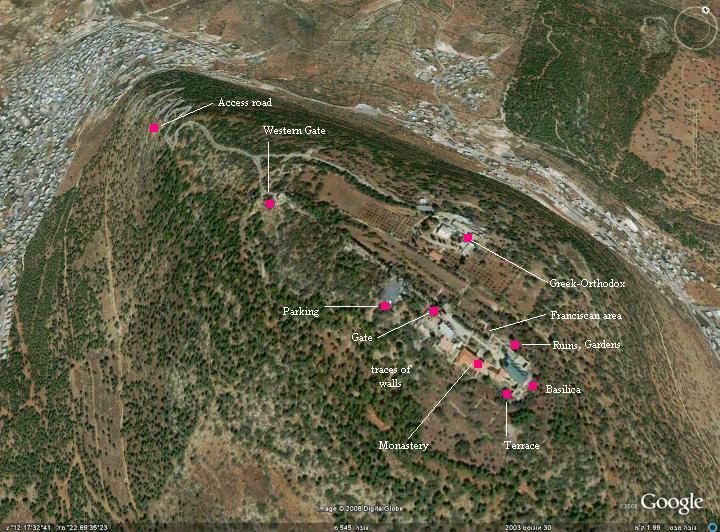
History:
- Crusaders – Franciscans
The Franciscans, which many years later rebuilt the church, are a Christian order that was established by St. Francis in 1209. In 1342 Pope Clement VI declared that the Franciscans are the official custodians of the Holy places (“Custodia Terroe Sanctoe”). This custody is still in effect to date, including this monastery.
- Ottoman period
The monks returned to the Holy mountain in 1873, after the Ottomans granted permission.
The modern church was completed in 1924. It was built over the ruins of earlier churches – a 4th C AD Byzantine church and a 12th century Crusader church.
- Present time
The Monastery is open to the public and is a recommended site to visit.
Photos:
(a) Entrance to the Monastery:
The entrance to the Monastery is located on the south-west side. It is an impressive Medieval style gate – called the “gate of the wind”. It is based on the original Crusaders gate, and was restored in 1897.
Click on the photos to view in higher resolution…
The 5-cross symbol above the center is the Franciscan’s symbol. This symbol was originally the Crusaders’ sign of Jerusalem, and was adapted by the Franciscans. The 5-crosses motif is based on the 5 Holy wounds of the crucifixion of Jesus (2 in the hands, 2 in the legs, and one in the chest).
After the gate is a narrow road that leads to the inner gate. On both sides of the road are tall cypress trees, a wall and some ancient structures (you can read about them in a separate page). A parking lot is located on the right side (hidden in this photo).
(b) The yard of the Monastery:
Past the gate is a large open yard. On its south side are offices of the Franciscans and buildings where the monks reside, as seen below.
Another view of the yard, looking towards the gate.
(c) Church Exterior:
The Church of the Transfiguration (Basilica della Trasfigurazione) stands on the east side of the compound. This structure was completed in 1924, built over the ruins over earlier Byzantine and Crusader churches.
Another view of the tall basilica.
(d) Church Entrance:
The impressive entrance of the Basilica is seen below.
This is the door to the church.
A heads up view above the door. On the wall is a huge Latin inscription with the passage from Matthew 17 – the transfiguration description.
A view of the bell tower on the south side is seen below.
(e) Church Interior:
The hall of the church is long and very high, which casts a holy sensation while entering the church. The high ceiling rests on large wood planks, as can be seen in the photo below. The main altar is located high above the east end, and under it is a convex shaped chamber.
Above the main altar is an impressive mosaic painting in the high ceiling that depicts the central theme of the church – the transfiguration of Jesus before Peter, James, and John.
The mosaic shows a scene of Jesus floating in the air above a cloud. He is flanked by two clouds – Elijah the prophet on the right side, and Moses (holding the Ten commandments tablets) on the left side. The three disciples are standing below, amazed from the scene of the transfiguration.
Steps lead down to a chamber below, which is also the level of the Byzantine church. In the center is a vit’rage with a pair of peacocks, which are a symbol of mortality granted to the followers of Jesus, since according to legend the peacock’s flesh does not decay.
On both sides of the convex ceiling are beautiful mosaics which show different phases of Jesus – infancy, suffering, death and resurrection. The photo below is on the left (north) side.
The photo below is the second part – on the right (south side).
The photo below shows the south side of the hall. On the ceiling is another mosaic painting, and above the steps is a side altar.
(f) Garden:
On the sides of the church are ruins of the 13th century Crusader/Ayyubid walls, as seen in the photo below – which is seen from the terrace on the south side.
Other ruins of the Crusader and Byzantine churches are located in the north side, and among the ancient walls is a display of ancient installations and other items.
Another view of the archaeological garden and the traces of ruins of earlier structures.
The garden on the south side has also some interesting items, such as the well on the photo below.
(f) Aerial Views:
![]() The following YouTube video shows a flight over the monastery:
The following YouTube video shows a flight over the monastery:
Biblical References:
Matthew 17
According to Matthew 17:1-13 (and Mk 9:2, Lk 9:28), Jesus is transfigured before Peter, James, and John on the “mountain“. There are several candidates, such as Hermon (the tallest in Israel) and Tabor. Both are also referred as high mountains, see Psalms above (“Tabor and Hermon shall rejoice in thy name“). Tabor is closer to the center of Jesus activities, and also it is referred as “the mountain” in other texts. According to old traditions, Tabor is the holy mountain, and is called “the mount of Transfiguration“.
“And after six days Jesus taketh Peter, James, and John his brother, and bringeth them up into an high mountain apart, And was transfigured before them: and his face did shine as the sun, and his raiment was white as the light. And, behold, there appeared unto them Moses and Elias talking with him. Then answered Peter, and said unto Jesus, Lord, it is good for us to be here: if thou wilt, let us make here three tabernacles; one for thee, and one for Moses, and one for Elias.
While he yet spake, behold, a bright cloud overshadowed them: and behold a voice out of the cloud, which said, This is my beloved Son, in whom I am well pleased; hear ye him. And when the disciples heard it, they fell on their face, and were sore afraid. And Jesus came and touched them, and said, Arise, and be not afraid.
And when they had lifted up their eyes, they saw no man, save Jesus only. And as they came down from the mountain, Jesus charged them, saying, Tell the vision to no man, until the Son of man be risen again from the dead.
And his disciples asked him, saying, Why then say the scribes that Elias must first come? And Jesus answered and said unto them, Elias truly shall first come, and restore all things. But I say unto you, That Elias is come already, and they knew him not, but have done unto him whatsoever they listed. Likewise shall also the Son of man suffer of them.
Then the disciples understood that he spake unto them of John the Baptist”.
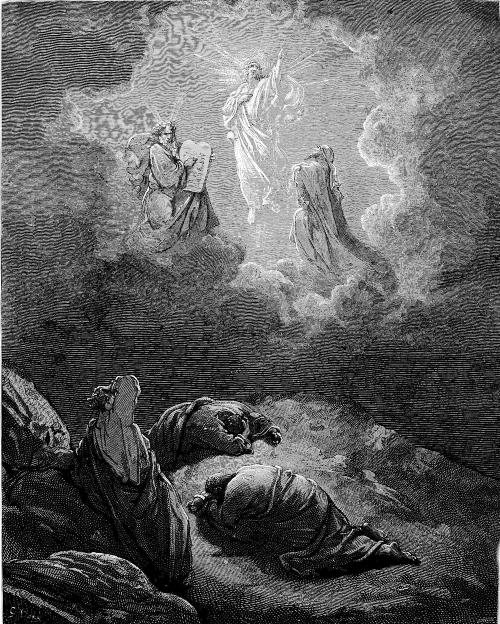
The transfiguration – by Gustav Dore (French artist, 1832-1883)
Links:
External Links:
- Franciscan web page and contact info of the convent
- Biblical pictures by Gustave Doré (1832-1883)
- Flight over the church – By Omer (Youtube)
Internal links:
- Mount Tabor – overview
- Greek Orthodox monastery, Mount Tabor
- Other Tabor sites
- Check out our pictorial presentation of the footsteps of Jesus. The transfiguration is event #68.
BibleWalks.com – walk with us through the sites of the Holy Land
Tabor (overview) <<–previous site—<<< All Sites>>>–-next Yizreel Valley site –>>> Tabor Greek Orthodox
This page was last updated on June 30, 2019 (Added new drone video)
Sponsored links:
